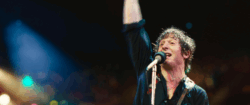While walking to class in Walsh, you may have noticed bright new banners jutting proudly from the façade, advertising a small and relatively under-the-radar part of Georgetown—the Department of Art and Art History. While Art History fits within the Georgetown’s academic atmosphere of law, government, business, and politics, studio art is unfortunately the redheaded stepchild of this institution.
John Morrell, the chair of the Department of Art and Art History, said the Jesuits historically conceived of painting and drawing as desirable extra-curricular activities rather than core academic subjects.
“Its an important distinction,” he said. “There’s no art studio, music practice, acting, or creative writing as a core course which could encapsulate a creative element for an education here.”
In an effort to look for some artistic and creative endeavors on campus, look no farther than the recently opened exhibit at the Lucille and Richard Spagnuolo Gallery—yes, we have an art gallery. (One that the Washington Post decided to cover, even.)
The Spagnuolo Gallery consists of two sleek rooms on the Walsh building’s ground floor. The gallery’s current exhibit, Select Contemporary Photography from the Lucille and Richard Spagnuolo Collection, comes from Richard Spagnuolo, a dental school alumnus who funded the gallery. The photographs are brilliant, high-gloss examples of the power of the professional lens. “The Red Purse” depicts a young girl peering with awe into (surprise!) a red purse emitting a whimsical bright light. The exhibit, which features big name artists such as Sam Taylor-Wood, is compellingly arranged against the pristine white walls of the gallery. These works, however, are not part of Georgetown’s permanent collection, whose pieces are spread out in privates areas—available for viewing by permission in Lauinger, locked in a crypt, or gracing the walls of Jack DeGoia’s office.
Although few students get into DeGioia’s office, the program has made its converts over the years. According to gallery director Evan Reed, some of Georgetown’s most artistic students are those who don’t intend to study art, but end up falling in love with it. Reed hopes that more students will attend exhibitions with the help of on-campus groups, such as the Georgetown Art Aficionados, who promote and raise awareness for students’ work.
Eventually, Morrell would like to increase the department’s faculty and potentially expand further into Walsh, but he doesn’t expect it to happen any time soon.
“It’s ironic,” he said. “We’re such a visual, multimedia, interactive culture. You’ve got visual images, film, and sound clips in all different classes now—the whole idea is not made as strong a part of our liberal art education as I think it should.”
So next time you pass through Walsh, take a look at the student work featured on the second floor, or drop by our University’s honest-to-God gallery. It may not have any Monets, but it’s the responsibility of the campus community to foster a creative environment for artists at Georgetown.





